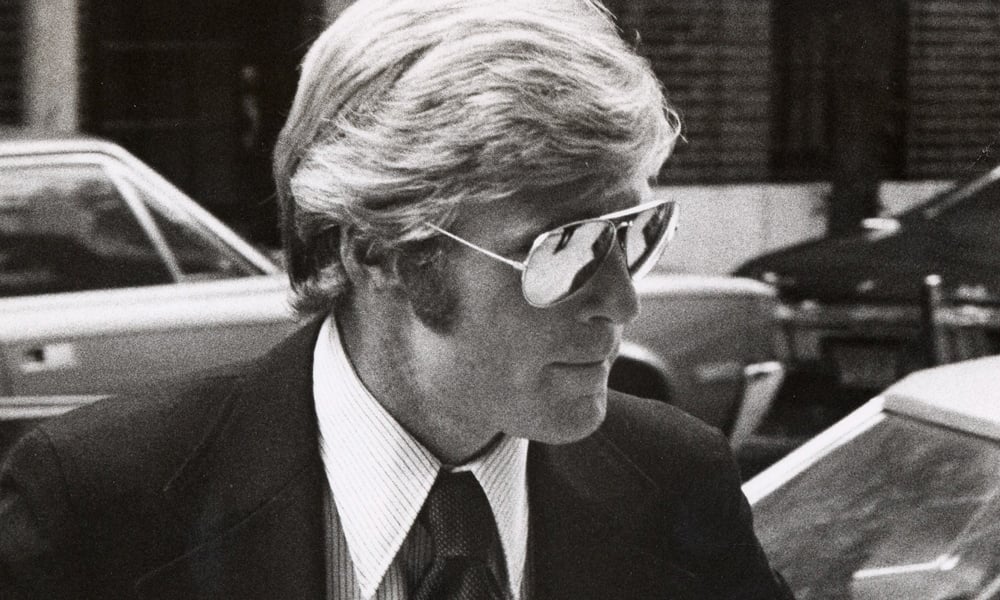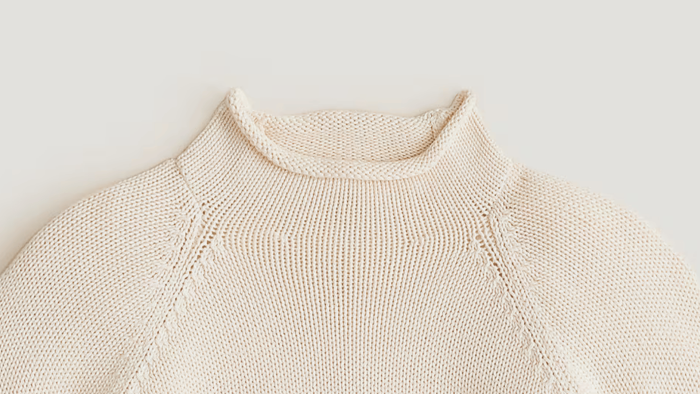If the history of aviator sunglasses sounds familiar, you’d be right. They came up when we were talking about menswear pulled straight out of the military. We were also thinking it was about time we went into deeper detail here, so let’s rehash a bit of what we’ve already written, then dive deeper into aviators’ rise to popularity and what they look like in the modern world. This is the history of Ray-Ban’s aviator sunglasses.
How to Prevent Tired and Frozen Eyes
Despite what the ubiquity of modern air travel would have you think, humans have only been flying around for a little over a century. Technology has moved incredibly quickly since the Wright brothers’ first flight in 1903, which means humanity encountered and solved a ton of ridiculously complex problems in a very short amount of time.
One such problem was the maliciously cold air of the upper atmosphere, where minus 80 Fahrenheit is not a rare temperature. In 1920, Shorty Shroeder pushed a biplane to its limits, taking it up above 33,000 feet. While he was up there, his goggles fogged up, totally obscuring his vision. The only real solution available to him at the moment was to take the goggles off completely, but that prompted another problem. His eyes were now directly exposed to the sub-zero temperatures of that altitude. Shroeder’s eyes froze over, which is not a pleasant thing to have to type and imagine, let alone experience. Somehow, he managed to land the plane.
Back on the ground, Lt. James A. Macready helped Shroeder out of his plane, simultaneously having the image of his friend’s swollen, frozen eyes burned into his memory. Presumably, Macready was thinking of those same eyes when he used the same plane a month later to try and beat Shroeder’s record altitude and was using goggles similar to Shroeder’s.
Macready already had problems with the goggles that pilots were using at the time, but something about this flight must have set him off because, in 1929, he started working with Bausch & Lomb, an eye health and protection firm, to design better eyewear for pilots. Out of that collaboration, though it seems Macready did the majority of the legwork, came the original aviator sunglasses: tint, shape, fit, and all.
The first commercially available set was released in 1937, though with a few key differences. Their frame was made of plastic and they didn’t yet carry the “aviator” name. What we would recognize as fully-fledged aviators came a year later, as Bausch & Lomb’s Ray-Ban Aviators, complete with a metal frame.
Consumer Reluctance and War-time Popularity
A lot of modern retrospection on aviators talks about how the glasses were an instant classic, but we have a feeling people are assigning a lot of retroactive popularity to a product they can’t imagine not being popular. That’s not to say they flopped. Far from it. From what we can tell, they were successful from the beginning.
But they weren’t the ubiquitous eyewear nostalgia makes them out to be. The aviator sunglasses were marketed pretty heavily as a product for outdoorsmen. They were sporting equipment for men who needed specialized functionality, not something every guy needed for walking around. Which makes sense. These were glasses with lenses that were meant to fight the glare and brightness of light in the upper atmosphere. As such, they came with a price tag of several dollars, a prohibitive and irrational expense, especially because the late 30s were a time you could buy perfectly acceptable sunglasses for a quarter.
Aviator popularity didn’t explode until the world did. During the Second World War, the public was inundated with images of aviators in the Pacific and European Theaters. General Douglas MacArthur is probably the most famous example, with the pictures of him returning to the Philippines doing most of the legwork. Reinforcing the look were the countless pictures of pilots and crewmen wearing aviators for the exact function they were made. Anyone who saw those pictures started to associate aviators with being immersed in glorious victory. Naturally, demand started to rise. Then all those pilots and war heroes came home and brought their aviators with them, making aviators a household item.
And this is all without talking about Hollywood’s involvement.
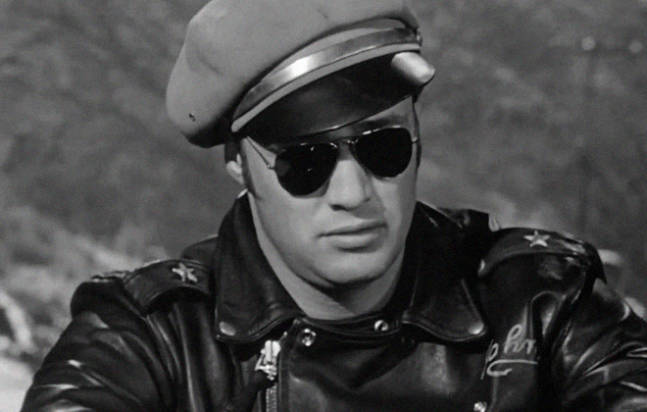
Pop Culture’s Fascination with Aviator Shades
We’ve never known Hollywood to let a popular thing follow a natural course and that rule certainly holds for aviator sunglasses. The astute film production studios of Hollywood saw the opportunity inherent in aviator shades and turned up the propaganda to eleven. They put the sunglasses on a ton of their leading men. It was a trend that actually intensified after the war. In the 1950s, Ray-Ban started a massive advertising campaign that put their glasses on as many leading men as possible and ended up cementing Ray-Ban’s place as the iconic constant that it is.
Marlon Brando was among the first and made them punk-cool in the 1950s while Paul McCartney brought them into hipper circles. Robert Redford has been seen in them repeatedly and John Goodman’s Walter Shobak of The Big Lebowski sports a pair. In the 1970s, it seemed like it was impossible to get a picture of a rock star without a pair of aviators on. Robert De Niro wears a modified version of them in Taxi Driver, Michael Jackson’s Grammy-famous aviators caused a popularity spike in 1984, and Top Gun brought them into the modern fighter jet cockpit in 1986. Women got in on the action in the 1980s and now you see as many actresses and female icons walking around in them as men.
Modern celebrities and politicians are keeping the tradition alive, not that it needs help. Scarlett Johansson and Jennifer Lopez are seen in them relatively frequently and we’re not sure that Joe Biden even has real eyes he’s wearing aviators so often. Brad Pitt had them on a lot in the early 2000s and Bradley Cooper might as well have them glued to his face. The point is, Aviator sunglasses get around.
The Best Modern Aviator Sunglasses
The biggest change made to aviators we were able to find was the switch from plastic to a metal frame between 1937 and 1938. If you wanted to get really technical, you could make the argument that Ray-Ban offering other kinds of lenses is a change to the classic aviator style, but we’re not so sure. Through the war, aviator sunglasses were constantly being issued with specialized lenses. Whether it was to block out the sun while keeping the instrument panel clear or sharpen a pilot’s sight by filtering out blue light, messing with lenses is just as much a part of the aviators’ history as the original teardrop shape or lightweight frame. Basically, anyone wearing aviators today is wearing the same pair of sunglasses that were initially released to the public.
Today, they’re not all made by Ray-Ban. The aviator style has been adopted by pretty much anyone making sunglasses, which means they’re easier than ever to get your hands on. If you’re looking to get in on more than eight decades of cool, we have a few ideas.

Ray-Ban Aviator Classic
Hopefully all the words we’ve said up to this point prove that aviators aren’t broke and don’t need to be fixed. If they’re good enough for MacArthur, Biden, Pitt, Cooper, Brando, Jackson, Cruise, and everyone else, they’re good enough for you. And don’t let any self-congratulating purists stop you from mixing and matching lens and frame styles. They were doing that back in the ’40s too.
Buy Now $163

Randolph Aviator
Randolph is the company making aviators for the modern US military, so if “military-grade” is important to you, they’re the company to go to. We like the matte black frame with cobalt mirrored lenses the most, so that’s what we’re linking to, but feel free to find whatever suits you best.
Buy Now $329
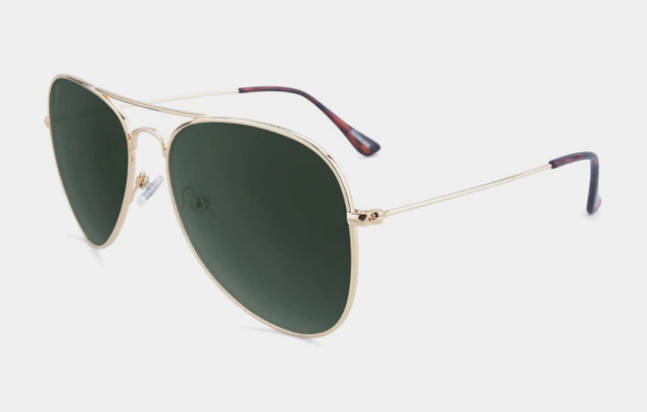
Knockaround Mile Highs
We were only just introduced to the Knockaround brand a little while ago, but we’re quick converts. They’re a good quality product that lives up to their name. These aviator shades are a stylish product you can beat the hell out of without feeling bad. Grab a pair and throw them in the car or your work bag so you’re never caught out on a sunny day.
Buy Now $34
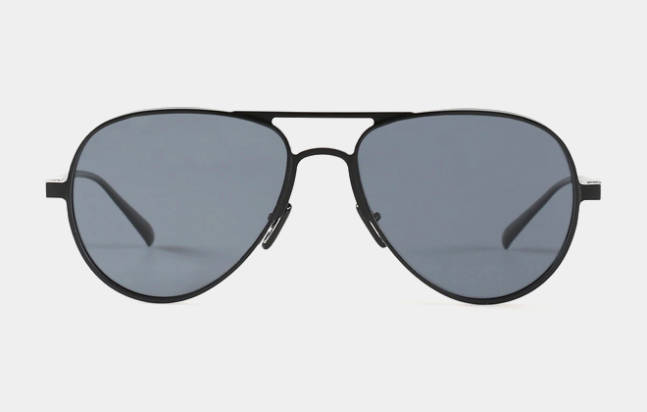
All Citizens Lafayette Aviators
Material upgrades to an old classic are always appreciated, as is the case here with the Lafayette Aviators. They’re made of an aerospace-grade aluminum and have scratch and impact resistant polarized lenses. They can take some roughing up without you having to worry about losing out on style points.
Buy Now $75

Akila Task Force
Akila is an eyewear company that specializes in making serious modern stylistic upgrades while retaining the core components of the original inspiration. We’d say that’s definitely what’s going on with these aviator sunglasses. They’re blockier, yet streamlined, where the traditional aviator’s bones aren’t quite obscured by the modern updates.
Buy Now $120

